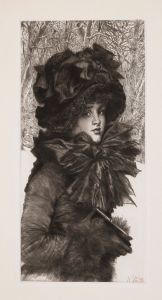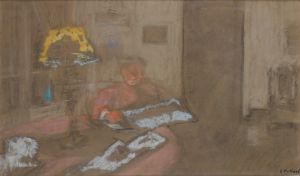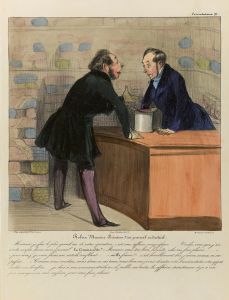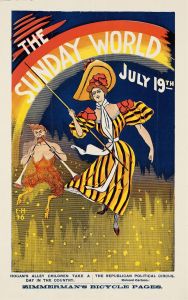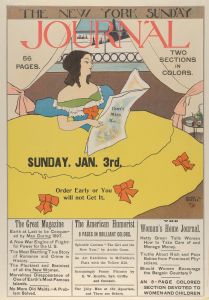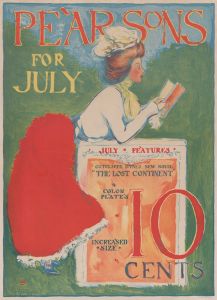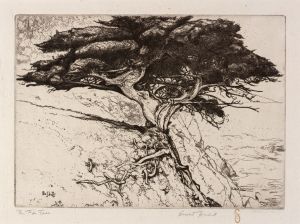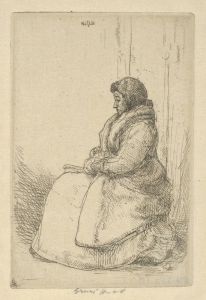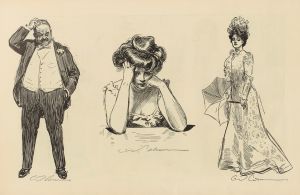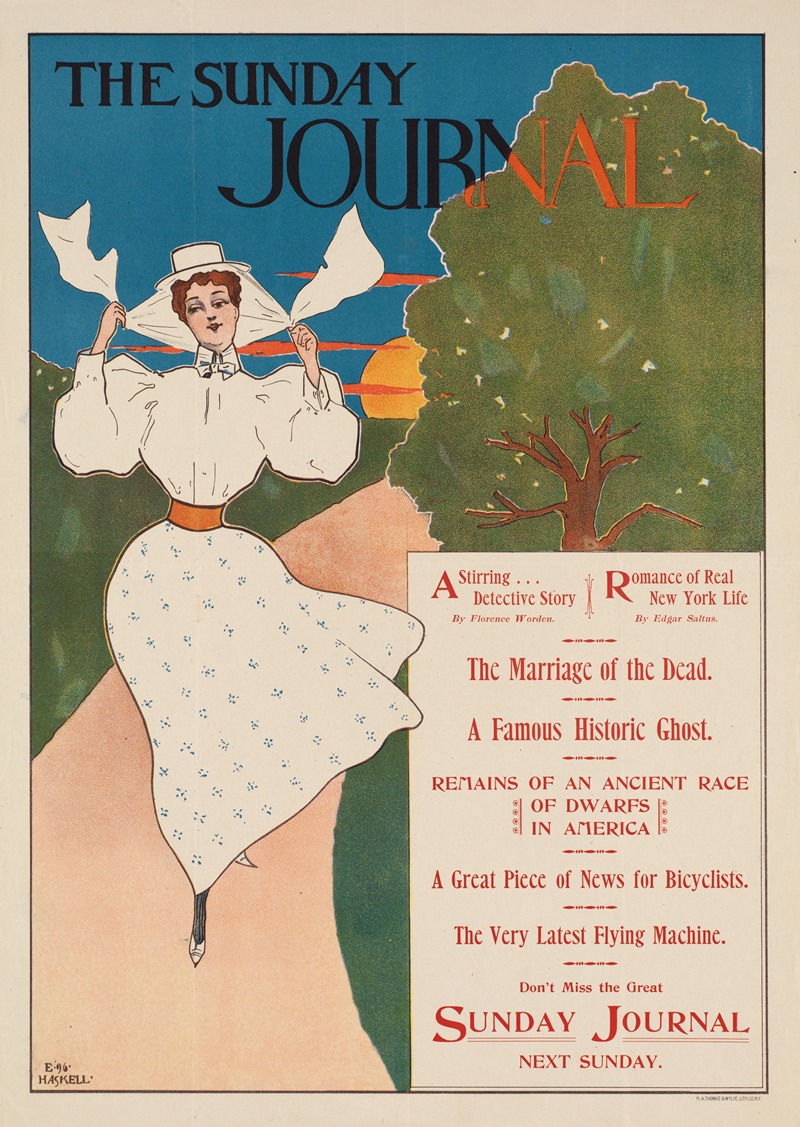
The Sunday journal
A hand-painted replica of Ernest Haskell’s masterpiece The Sunday journal, meticulously crafted by professional artists to capture the true essence of the original. Each piece is created with museum-quality canvas and rare mineral pigments, carefully painted by experienced artists with delicate brushstrokes and rich, layered colors to perfectly recreate the texture of the original artwork. Unlike machine-printed reproductions, this hand-painted version brings the painting to life, infused with the artist’s emotions and skill in every stroke. Whether for personal collection or home decoration, it instantly elevates the artistic atmosphere of any space.
Ernest Haskell (1876–1925) was an American artist known for his contributions to illustration, printmaking, and painting. One of his notable works is "The Sunday Journal," a piece that exemplifies his skill in the art of poster design and his ability to capture the essence of early 20th-century American life.
"The Sunday Journal" was created as a promotional poster for a newspaper, showcasing Haskell's talent in commercial art. During the late 19th and early 20th centuries, newspapers and magazines often commissioned artists to create eye-catching posters to attract readers. Haskell, with his keen sense of design and ability to convey compelling narratives through imagery, was a sought-after artist for such projects.
The poster features a striking composition that draws the viewer's attention. Haskell's use of bold lines and contrasting colors is characteristic of his style, which often combined elements of Art Nouveau with a more modern sensibility. The central figure in the poster is typically rendered with a sense of dynamism and movement, capturing the viewer's interest and conveying the excitement and importance of the Sunday edition of the newspaper.
Haskell's work on "The Sunday Journal" is a testament to his versatility as an artist. While he is perhaps best known for his etchings and portraits, his commercial work demonstrates his ability to adapt his style to different mediums and purposes. This adaptability made him a prominent figure in the American art scene of his time.
In addition to his commercial posters, Haskell was also known for his fine art prints and paintings. He studied in Paris, where he was influenced by the European art movements of the time, including Symbolism and Art Nouveau. Upon returning to the United States, he brought these influences into his work, contributing to the development of American art in the early 20th century.
Haskell's career was tragically cut short when he died in a car accident in 1925. Despite his relatively brief career, his work left a lasting impact on the American art world. "The Sunday Journal" remains a significant example of his contribution to commercial art and his ability to capture the spirit of his era through his distinctive artistic vision.
Today, Haskell's works are held in various collections, including the Library of Congress and the Smithsonian American Art Museum. His posters, including "The Sunday Journal," continue to be appreciated for their historical significance and artistic merit, offering a glimpse into the vibrant world of early 20th-century American media and advertising.





